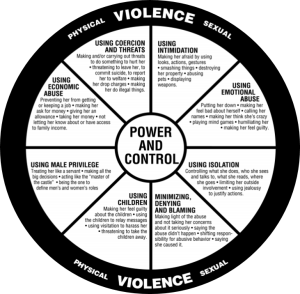Domestic Violence
Domestic violence isn’t limited to any one gender, age, or socioeconomic group and can happen in intimate relationships, whether married, dating, or cohabiting.
Domestic violence (DV) or Intimate Partner Violence (IPV) is a pattern of behaviors used by one person in a relationship to gain or maintain control over another. It can occur in many forms—physical, emotional, psychological, financial, sexual, and even through stalking or digital abuse. Domestic violence isn’t limited to any one gender, age, or socioeconomic group and can happen in intimate relationships, whether married, dating, or cohabiting.
POWER & CONTROL WHEEL
The Power and Control Wheel is a tool created by the Domestic Abuse Intervention Project (DAIP) in Duluth, Minnesota, to help understand the patterns of abusive behaviors in intimate partner relationships. It depicts how different tactics used by the abuser are all centered around gaining and maintaining control over the victim.
TYPES OF ABUSE
Domestic violence can manifest in various forms, often overlapping with one another. Below are the different types:
HELPING A FRIEND OR LOVED ONE
SAFETY PLANNING
A safety plan is a proactive, personalized and strategic tool designed to help a victim of domestic violence protect themselves, especially during an emergency or while preparing to leave the relationship. It’s essential to remember that safety plans should be kept in a place the abuser cannot access, and the victim should review and update the plan regularly as circumstances change. The ultimate goal is to minimize risk and empower the victim to take control of their safety when they need it most.
You can use this interactive guide (on a safe phone or computer) to create a safety plan for yourself OR help a friend create their plan. For more help with safety planning, call VIP’s 24-hour hotline!
https://www.thehotline.org/plan-for-safety/create-your-personal-safety-plan/#gf_1
